G.A.M.E.S. Campers Learn about Bioengineering While Breaking Down Stereotypes
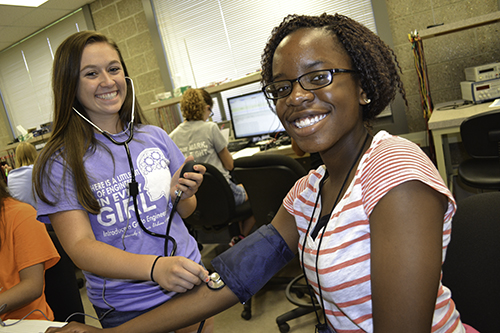
One Bioengineering G.A.M.E.S. camper takes another's blood pressure during a hands-on activity.
July 20, 2016
For one week this summer, 31 high school girls were exposed to the world of bioengineering (BIOE) at the Bioengineering G.A.M.E.S. camp (July 10th–15th). They learned about many aspects of bioengineering research, such as cell culture, health disparity, biometrics and 3D printing, MRIs, ethnography, synthetic biology, and much more. While the camp focuses on BIOE material, co-directors Jenny Amos and Olivia Cangellaris strive to “help [the girls] realize everything they can do as an engineer, not necessarily sticking with BIOE, but opening up their eyes to what it means to be an engineer [and] to create things to help transform the world in different ways.”
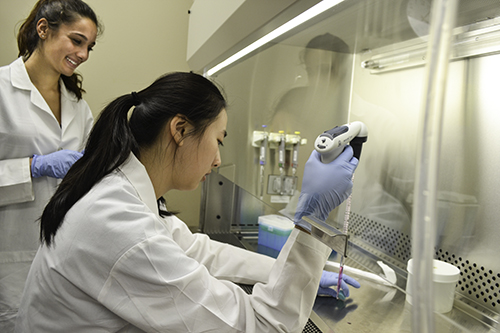
A Bioengineering G.A.M.E.S. camper performs a cell culture.
This ideology is what brings these two co-directors back every year.
“Seeing the girls who come out of the camp who are just convinced they’ve discovered where they’re supposed to be and what they’re supposed to be doing… it’s always great to say that you in some small way could have impacted helping them find their direction.”
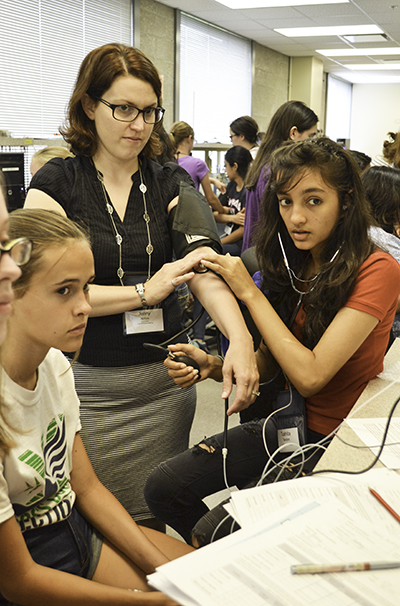
Jenny Amos shows campers how to take an accurate blood pressure reading during one of BIOE G.A.M.E.S. camp's activities.
Amos also adds to this by saying “Year after year, we have fun doing it because we’re just us, you know—having a good time teaching the girls—but also why the girls are comfortable talking to us, following up with us, sending us notes, and then they end up coming here.” Their closeness with girls and the way they keep in contact over time is astounding, and you can truly tell the impact the camp has on girls since “It’s at least a handful [of the campers] that come to Illinois, whether or not they come to the one they studied or other majors.”
The girls aren’t the only ones benefiting from this camp, though. Cangellaris says, “I’ve learned a lot. I’ve picked up things about curricula and how you tailor things to students with different backgrounds in terms of what they know. The nice thing about G.A.M.E.S. is that it’s very refreshing. It’s the same with teaching in general. Every year you get a group of new people that refresh your excitement for what it is you’re doing.”
Amos adds to this by saying,“I benefit from it in my career; some research papers have gone out about G.A.M.E.S. camp. We try to have a lot of fun with it, but it’s also helpful for us career wise, personal development wise. It’s just kind of beneficial to everyone.”
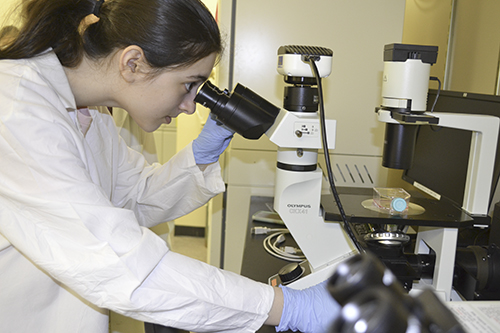
A camper examines a cell through a microscope during a cell culture activity.
When asked what their favorite BIOE G.A.M.E.S. event was this year, Amos and Cangellaris couldn’t decide since, “They’re all good.” When pressured more and asked which event the girls seem to have the most fun at, Cangellaris stepped up and said going to JUMP Simulation Education Center in Peoria, IL. Amos described it as “a simulation and training center for doctors in training so they learn to practice life-saving techniques or inserting IV lines, things like that.” Cangellaris said that this was “only the second time we’ve done it, but last year it was really exciting.” This all-day field trip is “a very novel experience, and it’s a way for them to see how bioengineering affects medicine.”
G.A.M.E.S. camp isn’t just teaching these high school girls about bioengineering research techniques, it’s also teaching them to go out in the world and do whatever they want, no matter how society views it. G.AM.E.S. camp inspires the campers through their strong, relatable, female co-directors.
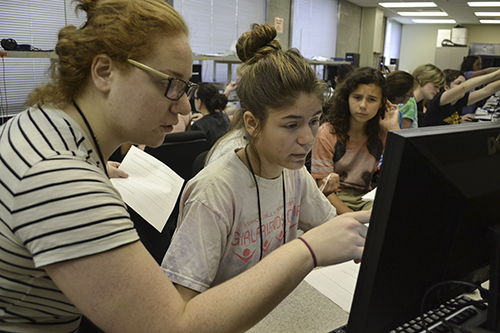
Olivia Cangellaris (left) helps a camper with an activity.
“It’s incredibly important to have role models of all genders, and all ethnicities, and all kinds of backgrounds. Because it’s very difficult to envision yourself doing something if you can’t see someone like you doing that,” Cangellaris states. That’s why the BIOE G.A.M.E.S. camp is so important to these high school girls.
“Being able to see strong women in STEM—whether it be engineering, mathematics, or life sciences—it really helps you visualize and say, ‘I can be like that person!’ And being able to show you’re passionate about something that in some ways people consider to be like a boys’ club and maintain your own identity and have that become a part of your identity is very important,” continues Cangellaris.
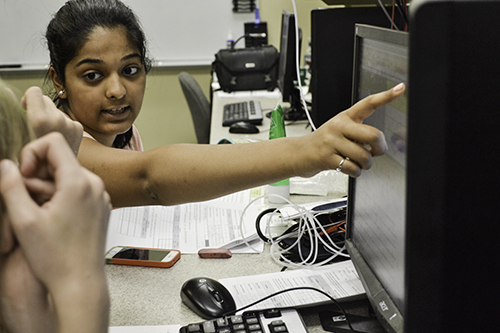
A camper discusses the results of their project with her team.
That’s what the BIOE G.A.M.E.S. camps do; they create a warm and welcoming environment for these high school girls and expose them to many different science techniques, all while being led by two funny, friendly role models (Amos and Cangellaris) that give these young, developing minds the push to believe in themselves and that they can succeed in a stereotypical male field.
Cangellaris expands on this idea by relating it to how she personally grew up: “Growing up, I never felt that there were stereotypes I had to break away from in order to pursue a career in a STEM field, because that was never part of the conversation within our family dynamic, and their faith in me is the basis of my courage to look and work beyond (or I suppose in spite of) those stereotypes in my undergraduate career and beyond.”
Now, at this camp, Amos and Cangellaris are in charge of instilling faith in these developing girls so that they can believe in themselves and pursue whatever major they want without being held back by gender norms.
Story by Alexandra Anne Peltier, I-STEM undergraduate student.
Photos by Elizabeth Innes, Communications Specialist, I-STEM Education Initiative.
More: 8-12 Outreach, BioE, GAMES, GAMES: BioE, Summer Camp, Women in STEM, 2016
For additional I-STEM articles about G.A.M.E.S. camp, see:
- AERO G.A.M.E.S Campers Soar with New Aerospace Knowledge
- At G-BAM GAMES Camp Girls Learn They Can Make a Difference Via Engineering
- High School Girls Discover Chemical & Biomolecular Engineering at GAMES Camp
- Girls Experience Electrical Engineering First-Hand at the 2016 GLEE GAMES Camp
- MechSE's WYSE Camp Helps High School Students Explore Mechanical Engineering
- G.A.M.E.S. Campers Experience Bioengineering—and Have Fun
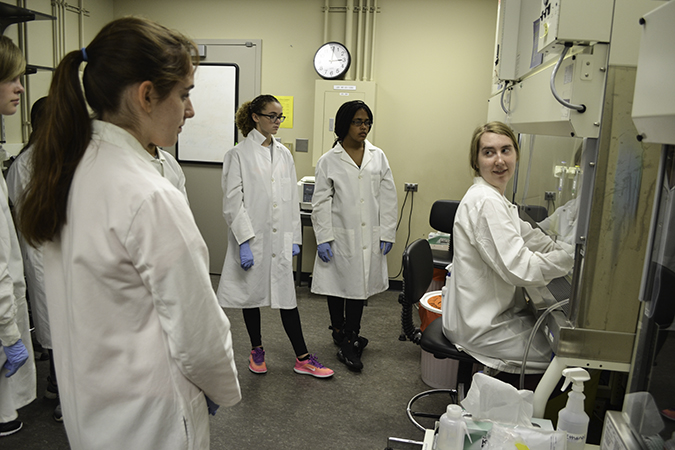
An Illinois grad student teaches BIOE GAMES campers how to perform a cell culture.













.jpg)
















